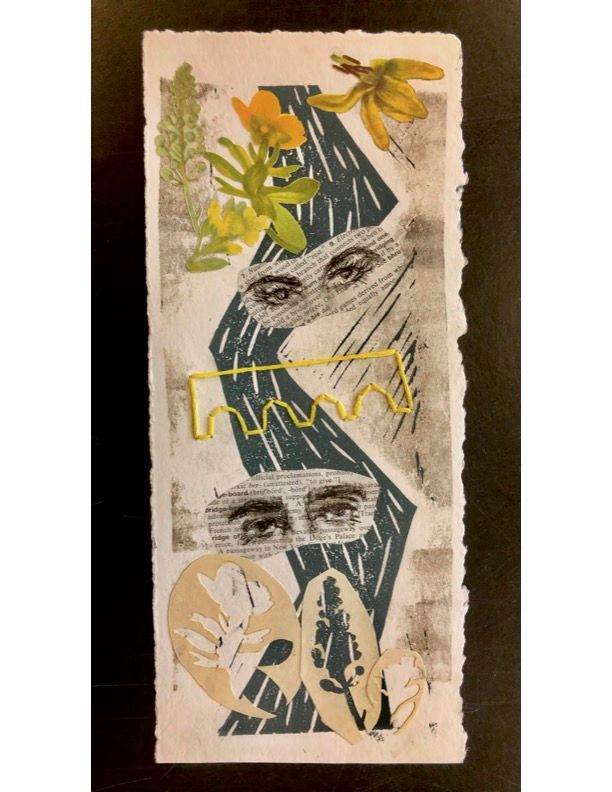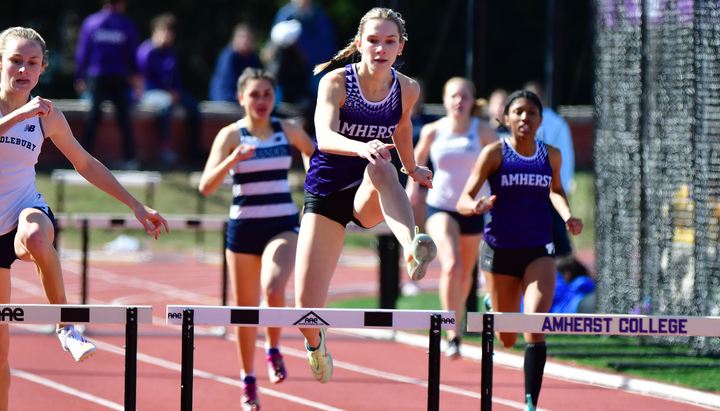The Indicator x The Student: “A School Day along 城門河”
Originally published in the Fall 2022 edition of the Indicator, Priscilla Lee ’25 writes about the experiences of young filmmakers in Hong Kong.

Along the banks of 城門河 are flower beds, bike lanes, and concrete paths, and a class of P.E. students are huffing through their mile run. An old man with his fanny-pack -radio strolls by, swinging and clapping his arms. One of the girls sweats past him and wonders if swinging her arms like that would propel her forward in this deathly test of fitness.
Nowhere else in the world would the dirty water they’re running along be deemed a river, but in this part of the island-peninsula-city of Hong Kong, surrounded by government housing, old factory buildings, and tiny apartments, this waste-passing canal is 城門 River.
The eighth grade girls PE class is from a school on the other bank. Three seniors from the same school are under a bridge with a camera — their big brothers and big sisters — hiding from the humid April sun. They’re trying to shoot a short film.
“Have you seen Cléo from 5 to 7?” asks the student filmmaker, an emerging auteur (who’s learning la langue française). “At the end of the film, they walk towards the hospital where she’s about to find out the results of her biopsy. She probably has cancer, and he’s probably going to die in war. But right now they’re walking, and looking at each other, and the camera walks with them. I want you to walk just like that, out of the shadow of this bridge and into the sunlight. The camera will take a while to adjust to the changing exposure, so you need to hold your gaze. Walk slowly. You’ll think it’s way too slow but on camera it looks normal, got it?”
Our actors don’t know what the short film is about, for the student filmmaker heard that 王家衛, the famous Hong Kong auteur, shot a whole film while his actors didn’t know which character they were playing. That man is a genius, and our auteur thinks she’s somewhat of a genius, too. So all our actors know is that they’re going to walk as if to their deaths, or to the prognosis of their deaths.
The girl and the boy have never had a prognosis of death, but they’ve been newly flushed in love (in real life, not in the short film, though perhaps also in the short film — the student filmmaker hasn’t told them yet), and are waiting for a prognosis of love. They haven’t decided what to do with their love, or if it is truly love, which our auteur loves. She imagines that their indecision, their pushing and pulling, will sparkle in the space between their gaze and electrify the screen, that as the sun shines into the lens and washes the shot with white, this shimmer of hopeful anxiety, of lovely pain, will be as magical as the blurry dolly rails in the French film she’s referencing.
In the DVD extras of “Cléo from 5 to 7,” director Agnès Varda said they reshot the final scene when they realized that the dolly track (on which the camera was steadily moved to walk with the lovers) was visible in frame. So they reshot the scene, but the magic was ruined. It was not the same. Cléo’s eyes did not flicker up and down in the same way, the close-mouthed sigh of her shoulders tingeing her smile with something of a grimace. José’s flared nostrils did not swing into view as he turned his head, nor did it shake a little, as it did before, as if unsettled by the great force of looking at her. They reshot the scene, but it was not the same, so the clean, dolly-less shot was scrapped and the mistake was immortalized in the final, most memorable scene of this masterpiece.
If we were shooting this at any other time, our student auteur thought, if we were filming this walk by 城門河 at any other time, it would not be the same. A month ago the couple had not yet been flushed in love — what they’re pretty sure is love — and were still preening and puffing and turning away. A month later and they might have untangled their indecision, either tending to soft-cut wounds, or resting comfortably in a more familiar gaze. Now, our auteur thinks, now is the perfect time.
3… 2… 1… and action! The boy and the girl walk out from under the shadow of the bridge and into the bright sunlight. It is awkward on their necks, to walk with their heads turned just so. The girl gazes up at her newly beloved, at the red pimple on his chin. It’s not yellow yet, not ready to pop. But above each eyebrow, he has a tiny wound, with little dried blobs beside. They form a triangle across his face. He gazes back at her, his first sweet love. There’s a mole straddling the edge of her upper lip. It’s almost a hemisphere, with a satellite planet (a tiny punctuation dot of a mole) off to its upper left. What would it be like, if they ever grazed their love with a touch, to connect the dots of his pimply face, to kiss the wrinkles of her beauty-marked lips?
Our auteur, now desperately trying to keep them in focus, does not know the exact quality of the magic she’s capturing. That her lovers, never having gazed at their beloved so, are discovering that the other is not as beautiful as they’d thought. Her face is a bit wonky, and he kind of looks like a monkey.
They’re sweating profusely as the sunlight washes through the camera lens, as they walk again and again with necks stiffly locked. All the while, pupils, nostrils, patches of hairy skin, tumble through their fevered minds. O what glorious sights to fuel a flaming love! That big monkey ear and wrinkly mole, the sour smell of her damp uniform shirt — all flowing through the other’s senses — but their memories cannot catch them. They would meditate for nights upon this day, when they walked, again and again, holding each other in their gaze. But they won’t remember, will never remember, exactly what they saw, under the bright April sun in the magic of the camera, not touching, not speaking, just walking.
The girls are running back, at the end of their mile, their diaphragms in stitches and their throats tasting blood. What a long mile it is, measured from bridge to bridge! They watch our trio: big, scary seniors with a big camera, and wonder — what is their film about?




Comments ()